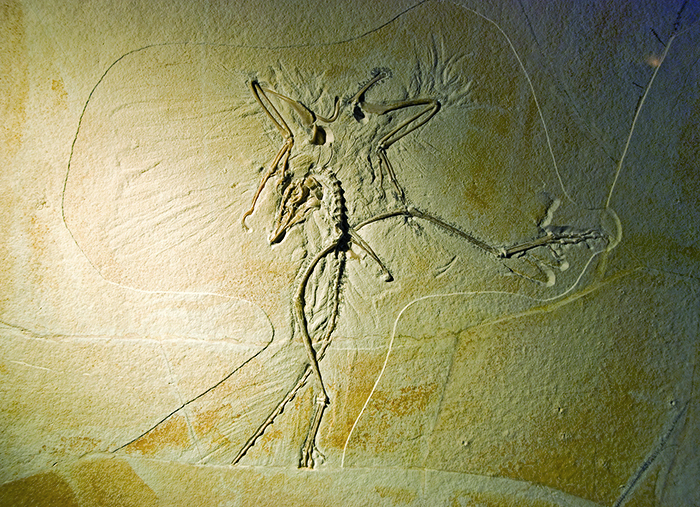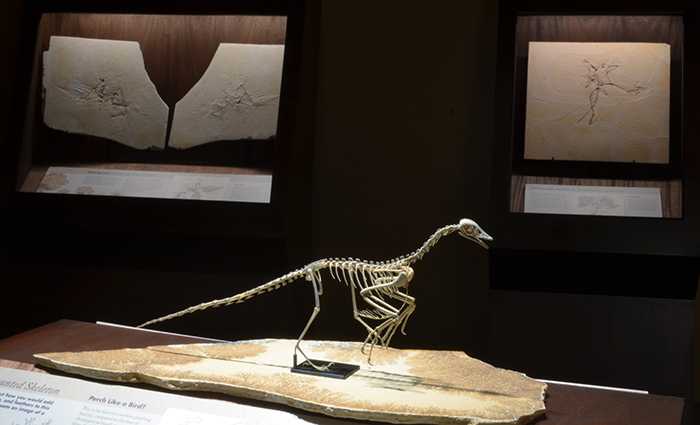
Specimens
Archaeopteryx, although not as well known as T. rex, is infinitely more important in the world of science. In Darwin’s time it was the fossil that changed the world. Now it is time again for this small, feathered dinosaur to gain public attention in a big way.
The history of Archaeopteryx is rich with debate and controversy. Originally described in 1862, the London specimen was the first example of a possible “missing link” between reptiles and birds.
Nine specimens and 143 years later, the Thermopolis specimen, described in 2005, revitalized the evolving discussion in the great story of dinosaurs and flight.
"Dinosaurs Take Flight" includes high quality research grade replicas of eight Archaeopteryx specimens. Associated text describes the history of discovery and its importance to the scientific community.
Exhibition discusses the life and environment with a display of other flora and fauna from the Solnhofen lagoon. Elements include replicas of pterosaurs, Compsognathus, and a mounted Archaeopteryx skeleton as well as a collection of real fossils with dragonflies, insects, squid, shrimp, horseshoe crabs, fish, brittle stars, and others.


